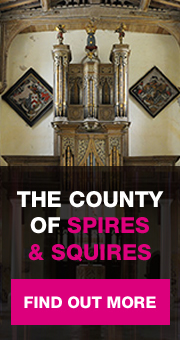An enchanting stone-built village set in beautiful countryside surrounding Boughton House, a stately home and estate of 11,000 acres that is one of the seats of the Duke of Buccleuch.
The church is one of three Grade I Listed buildings in the village. Dating from circa 950 A.D, the current size of the church was largely complete by about 1300 – the tower and clerestory being added later in the 14th Century. A royal palace once stood next to the church, and when Edward I’s Queen, Eleanor, died in 1290, her cortege rested here on its way to Westminster. This is commemorated in the village’s famous Cross - the best preserved of only 3 surviving crosses. The village’s superb mid-13th Century stone bridge is another mark of Royal patronage added later in the 14th Century.
The church’s Saxon origins are clearly seen in arcading and ancient roof scars. A curious Latin inscription dated 1369 records improvements made by William Glover and Robert Launcelyn, one of whom might be the priest commemorated in the adjacent stone effigy.
Unusually, there are three surviving chancel screens in the church. The earliest is late 14th Century. The second is a superbly carved work given by Maurice Tresham in 1618. The current chancel screen dates from 1908 and is by Gambier Parry.
A superb brass dated 1400 commemorates John and Johanna Mulso; and a finely engraved alabaster slab nearby is dedicated to Richard and Isabel Tresham, with a date of 1433. Both monuments were moved here from St Faith’s Church, Newton after it closed in 1972.
Major refurbishments were carried out in the Victorian and Edwardian periods, with the famous architects Sir George Gilbert Scott and Sir Ninian Comper responsible for ordering the church in the largely Anglo-Catholic architectural mould we see today.
Please refer to the Glossary for any terms in the text that you are unfamiliar with.







